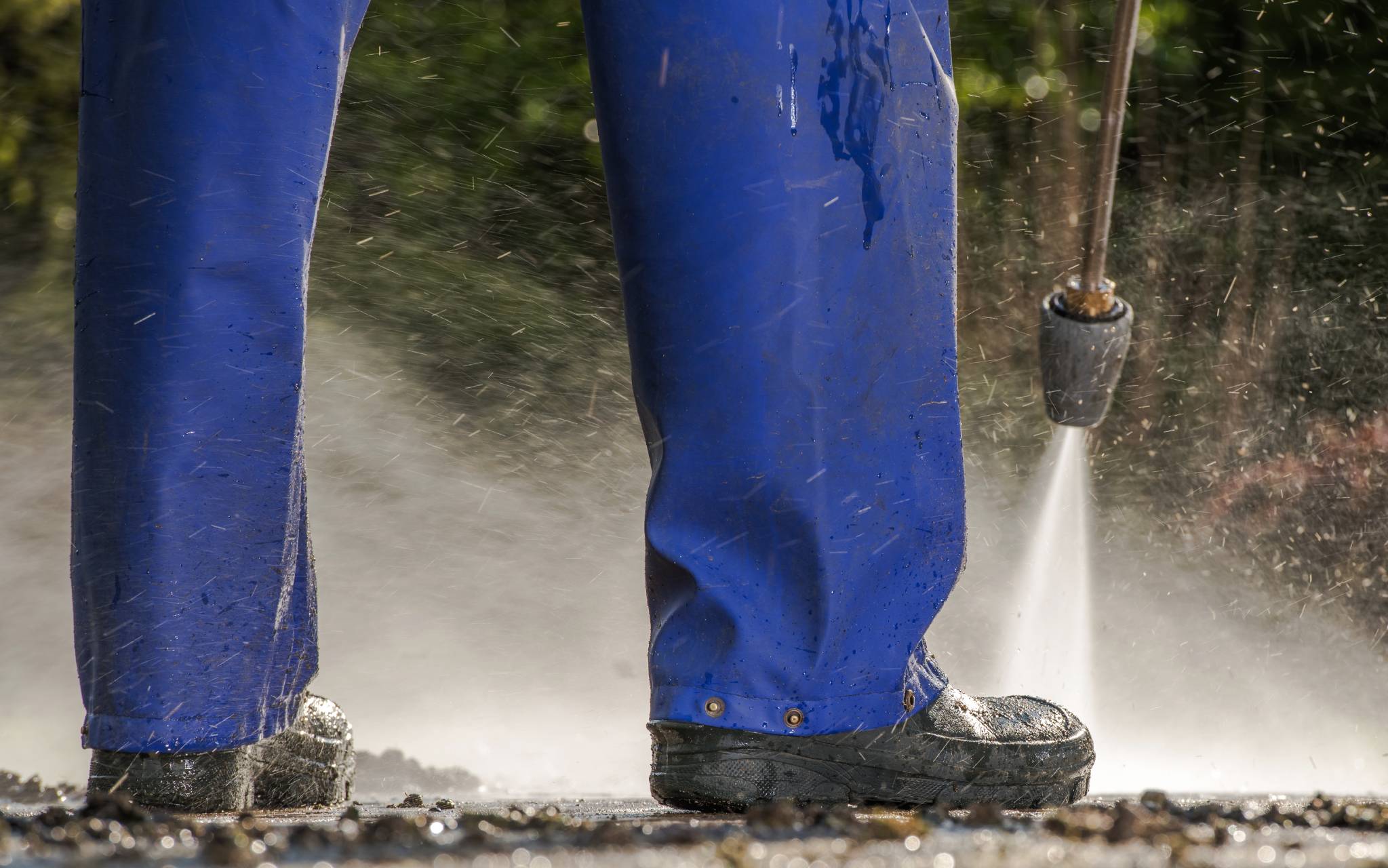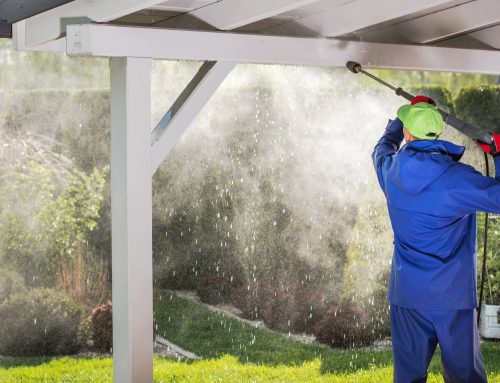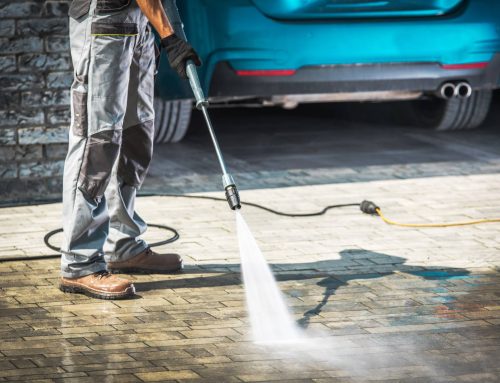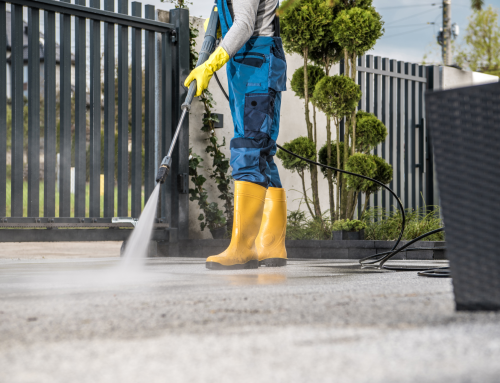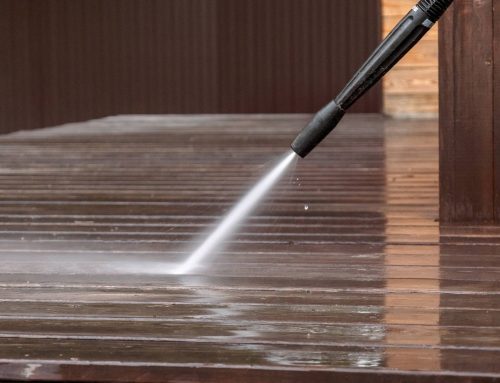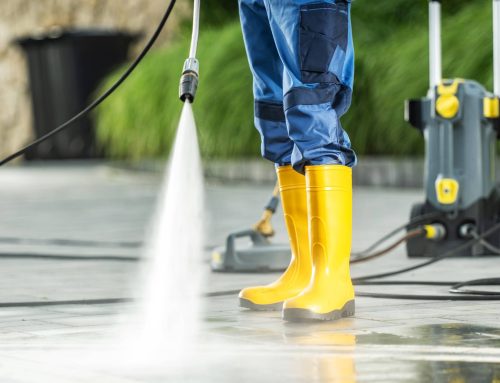Power washing is an effective way to perform exterior cleaning and maintenance on driveways, decks, and siding. It can clean surfaces more thoroughly than traditional cleaning methods and can save you a significant amount of time compared to manual scrubbing and cleaning. When dealing with large areas, power or pressure washing is a quick and efficient way to tackle these surfaces, even those with stubborn stains. Regular power washing can help prevent the buildup of mold and mildew, which can damage surfaces over time. As such, power washing can help maintain the appearance and integrity of your home’s exterior.
In general, many people choose to power wash their exterior surfaces in the spring or early summer, when the weather is generally mild and dry. If you live in an area with harsh winters, power washing in early spring can help you remove salt, sand, and other debris that have accumulated on your driveway and walkways. Since power washing is an effective method for exterior maintenance and mold and mildew removal, you might wonder whether you can power wash in cold weather. Power washing in cold weather can be possible, but it requires taking significant precautions and considerations to ensure safe and effective cleaning. If you are considering power washing in cold weather, here are important points to keep in mind:
Water Temperature
When power washing in cold weather, water temperature can affect the effectiveness of the cleaning process and the operation of the power washing equipment. In general, hot water is more effective at breaking down and removing dirt, grease, and grime compared to cold water. Using hot water can help melt and loosen frozen dirt or ice and make surfaces easier to clean in cold weather. It can also clean surfaces more quickly and help speed up the cleaning process, which is valuable when working outdoors in the cold weather. However, not all power washers may be equipped to heat water. In some cases, using appropriate solutions with cold water can work in cold weather. However, it is important to take precautions to prevent cold water from freezing, as it can lead to clogs and reduced water flow, affecting the performance of the power washer.
Freezing Concerns
In freezing temperatures, water left in the hoses, pump, or nozzles can freeze and damage the power washer. Frozen water can cause hoses to crack or burst and potentially damage the equipment. When water freezes inside hoses and nozzles, it can lead to clogs and reduced water flow. This can affect the performance of the equipment and make the power washing process less effective and efficient. When power washing in cold weather, using insulated hoses or hose jackets can help keep water from freezing in the hoses. It is important to pay attention to weather forecasts and to plan power washing during less frigid periods. Frozen water on the ground or on surfaces can create slippery conditions, which can increase the risk of slips and falls.
After power washing in cold weather, it is important to drain the hoses, pump, and nozzles thoroughly to prevent water from freezing and damaging the equipment. It is also important to keep the equipment in a warm and dry location when not in use.
De-Icing Solutions
De-icing solutions are designed to lower the freezing point of water. When added to water in power washing equipment, de-icing solutions help prevent water from freezing inside the equipment. This helps maintain a consistent water flow. It helps keep water in a liquid state, which enables the water to effectively break down and remove dirt, grime, and contaminants from surfaces. Without de-icing solutions, the risk of freezing and equipment issues may limit your ability to power wash effectively. With de-icing solutions, you can help protect power washing equipment from damage caused by freezing. However, it is important to properly dispose of leftover de-icing solutions and to rinse the power washing equipment after use to remove residues.
Safety Precautions
Taking safety precautions is especially important when power washing in cold weather. Cold weather can introduce additional hazards and challenges that need to be addressed to ensure a safe working environment for the operator and those in the vicinity. It is important to make sure that any bystanders are kept at a safe distance from the power washing area. Cold weather often creates icy or wet surfaces, increasing the risk of slips and falls. The water used in power washing, combined with freezing temperatures, can create slippery conditions. It is important to wear proper footwear with good traction and to be extremely careful when navigating slippery areas and surfaces. Furthermore, it is also essential to wear appropriate cold-weather clothing, such as insulated gloves, warm clothing, and water-resistant layers, when power washing in cold weather to prevent hypothermia and frostbite. Wearing appropriate personal protective equipment (PPE) can also prevent exposure to chemical cleaning solutions and detergents that are used when power washing.
It is critical to ensure that power washing equipment are properly grounded and in good condition before, during, and after the power washing process. Cold weather can increase the likelihood of wet conditions and can also impact the performance and safety of power washing equipment.
Drying Time
Cold weather can slow down the drying time of cleaned surfaces. If you power wash your surfaces in preparation for painting, staining, or sealing, you will also need to allow extra time for these surfaces to properly dry after power washing. To ensure proper drying in cold weather, you may want to choose a dry and relatively warm day to perform power washing tasks. In cold weather, any residual water left on surfaces can freeze, which can create slippery and hazardous conditions for both pedestrians and vehicles. Mild temperatures and low humidity can facilitate faster drying and can provide better conditions for power washing.
Avoid Extremely Cold Conditions
While power washing in cold weather can be possible, it is best to avoid extremely cold conditions. Extremely cold weather, such as sub-zero temperatures, can pose significant safety risks to the operator and bystanders. Power washing equipment may not perform optimally in extremely cold weather, with freezing concerns that can reduce water flow and damage equipment. Furthermore, the cleaning process may be less effective in extreme conditions. Frozen dirt, grime, and contaminants can be challenging to remove and may require more time and effort to achieve the desired level of cleanliness. However, in extremely cold temperatures, operators may be limited in how long they can work comfortably and safely outdoors. Extremely cold weather also increases the risk of water freezing quickly on surfaces after power washing, which can create icy and hazardous conditions. To mitigate these concerns, planning power washing tasks for milder conditions can help ensure a safer and more efficient work environment.
Work with Professionals
Professional power washers have extensive experience and expertise in working with power washing equipment in various weather conditions, including cold weather. They understand the unique challenges and precautions required for power washing in cold weather. They have the proper equipment and tools to power wash effectively in various conditions, including cold weather. Furthermore, power washing professionals are well-trained in identifying and mitigating hazards related to cold weather. They prioritize safety in their work, using appropriate safety gear and following safety protocols to ensure a safe working environment.
If you are considering power washing in cold weather, it is best to consult with power washing professionals first. They can provide guidance and help you prepare for an efficient power washing process. With safety precautions and considerations in mind, they can help you schedule power washing for your exterior cleaning needs. Professional power washers can help you achieve your desired results while minimizing the risks associated with power washing in cold weather.

